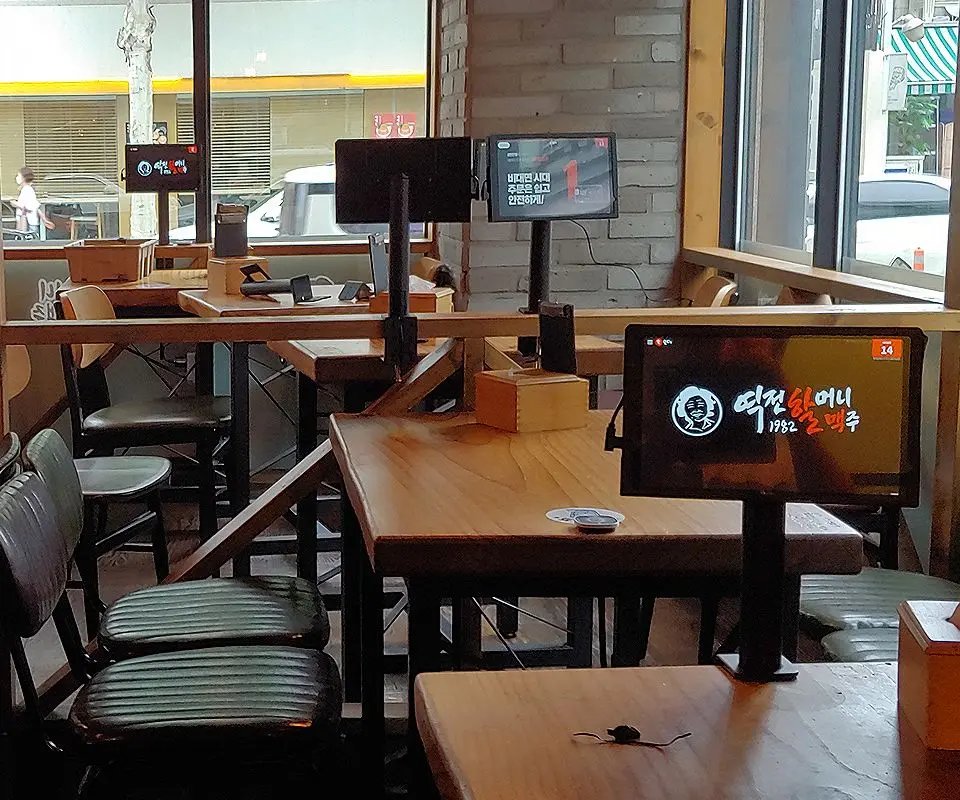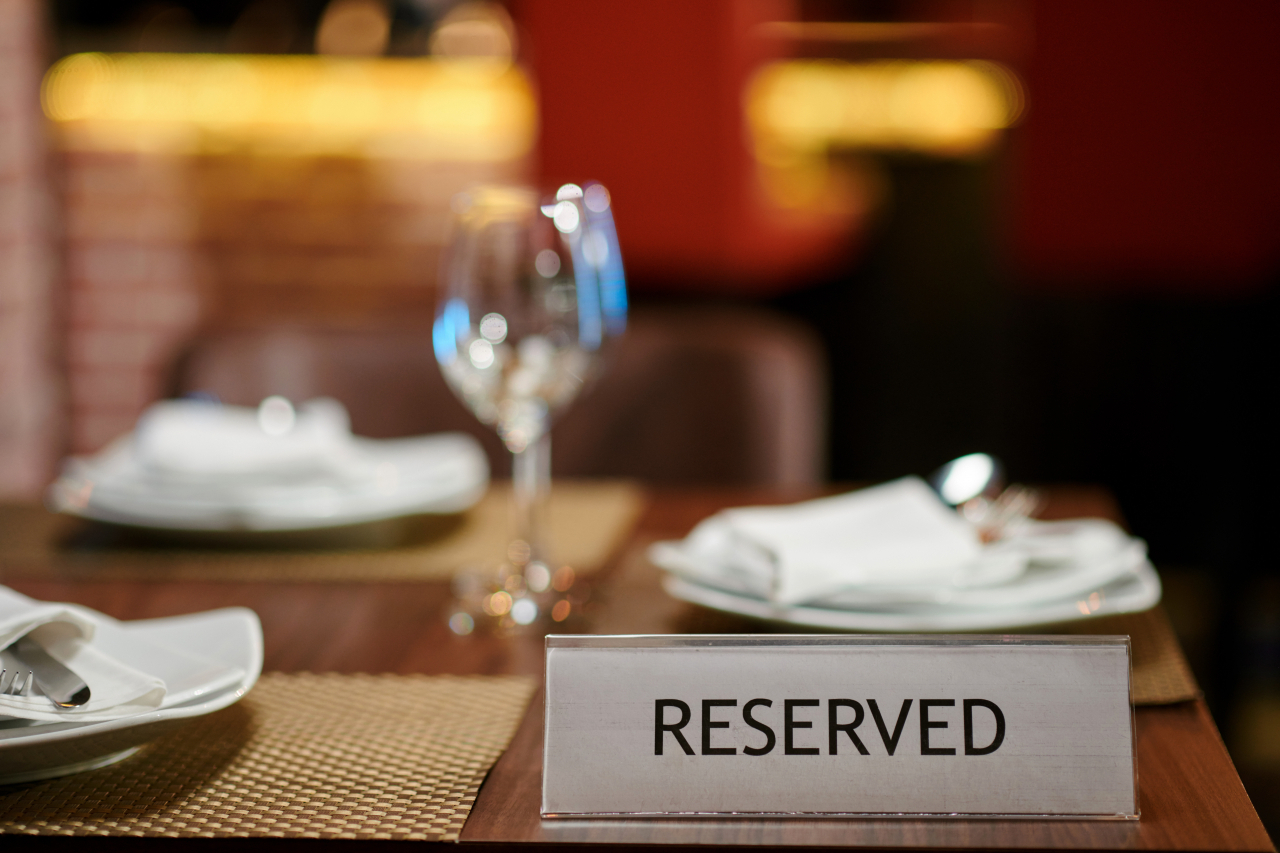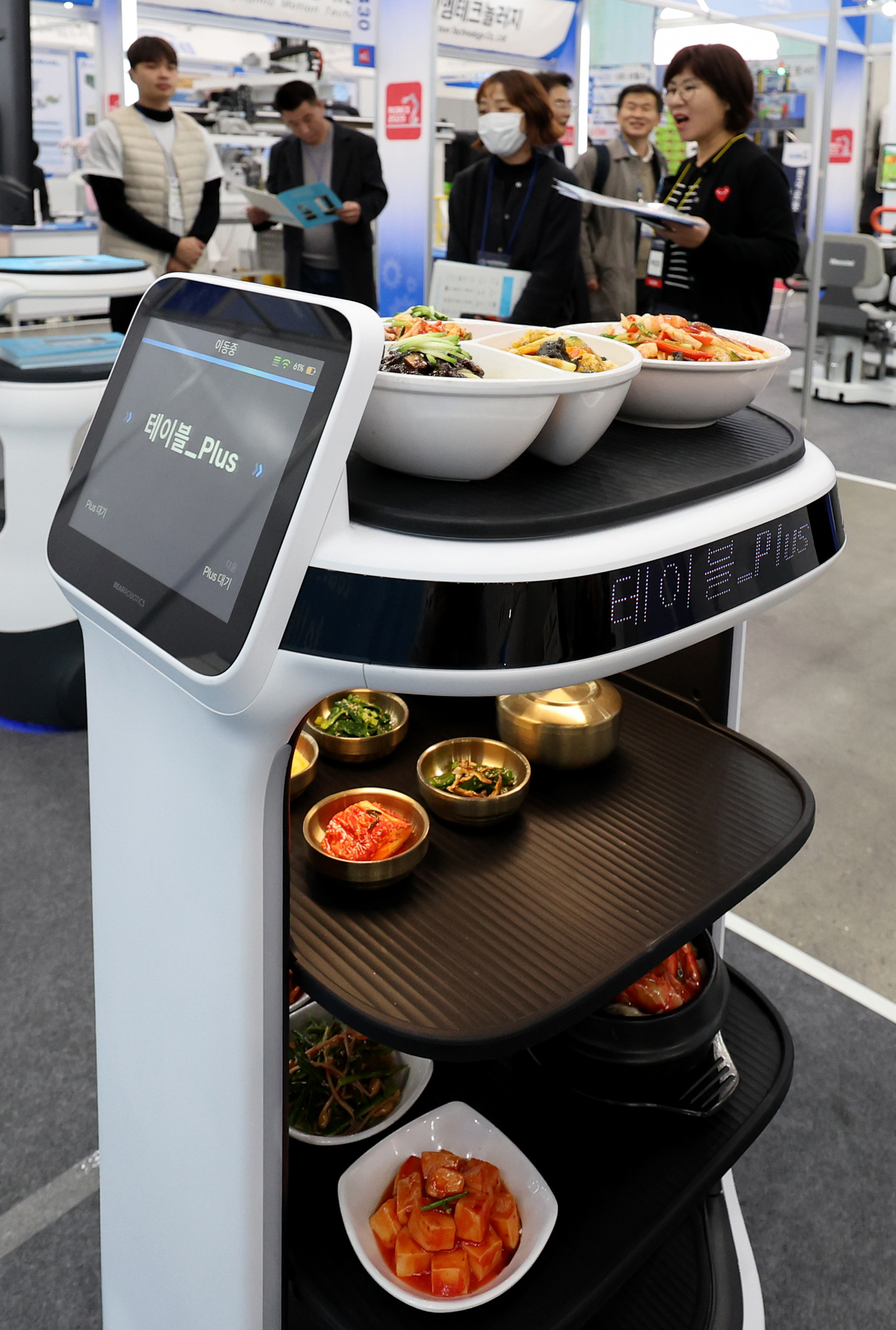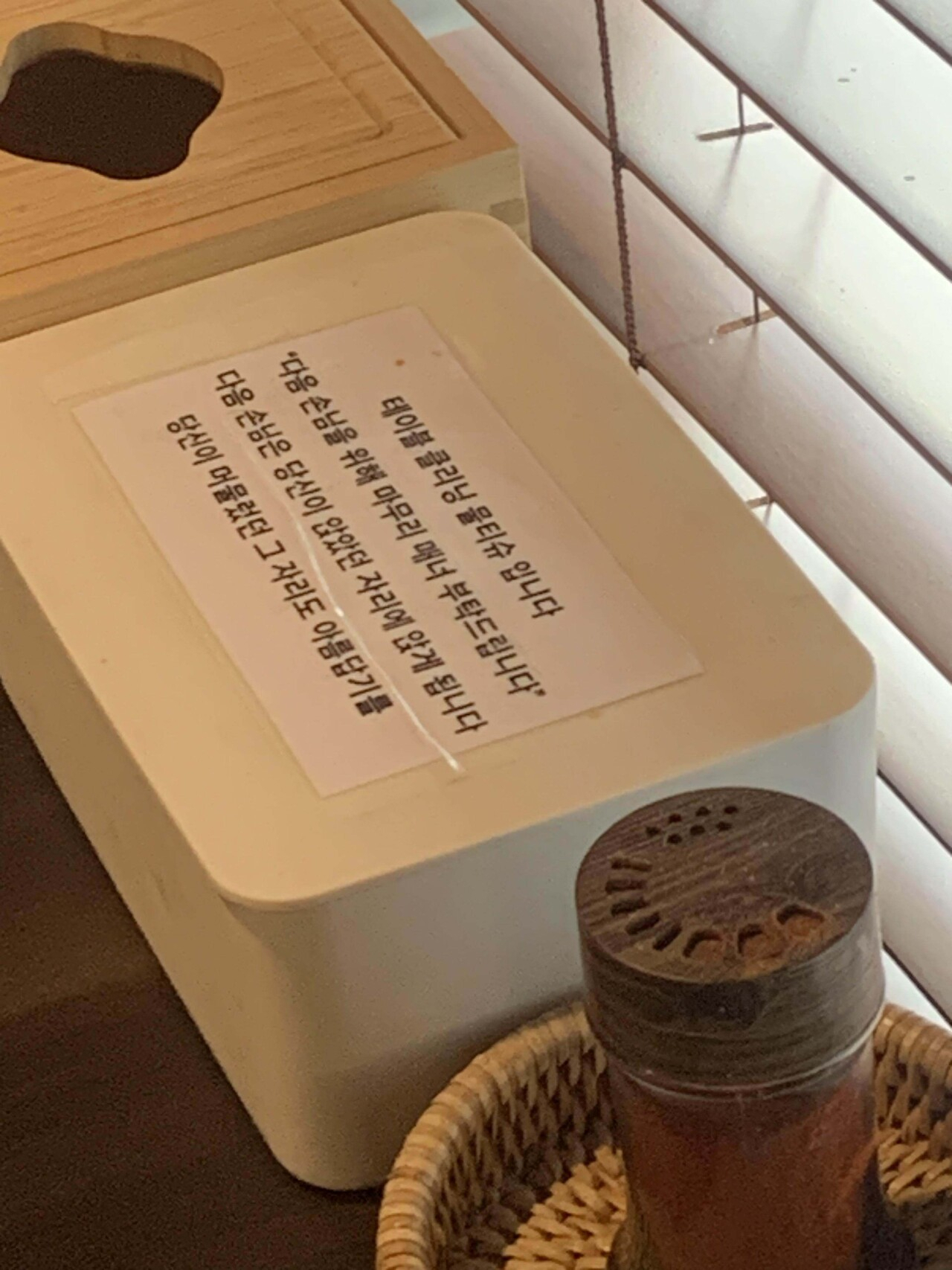Dining out is going digital: Not everyone is happy
In addition to digitalizing waiting lists, ordering and paying, some eateries now eliminate basic services such as serving food or clearing tables
By No Kyung-minPublished : Jan. 31, 2024 - 09:15

The days of flagging down busy servers are almost becoming rare here.
At many Korean restaurants, diners are now being asked to order -- and often pay up front -- via a digital device installed at each table, or at standalone kiosks.
Digitalization’s reach is not only limited to ordering systems, as at some venues, reserving and waiting for a table have been moved online. And there is a small but growing number of server robots being deployed.
Using digital devices to order and pay purports to improve time and task management for restaurants while reducing the need for customers to rely solely on human staff.
Some digital-savvy diners also prefer this type of dining experience for being more streamlined and less hassle.
But is digitalized dining really better?
Virtual waiting lists
In Korea, it has become almost impossible for walk-ins to dine at trendy restaurants at peak hours, with the widespread adoption of online reservation and wait-listing apps.
Kim Min-chul, a Seoul resident in his 20s, says that without virtual wait-listing app Tabling, he wouldn’t have made it into London Bagel Museum cafe, which is notorious for its lengthy wait times.
Tabling, along with Catch Table, is among the most popular digital wait-listing systems that allow customers to join a virtual waiting list without physically lining up.
Lee Ji-min, an office worker in her 20s, finds restaurant reservation apps very helpful for managing her time as a customer.
"When I need to arrange dining for guests from my company's headquarters, reservation platforms enable me to refine my search and select the best options based on the restaurant information they've compiled," she explained.
As of the end of 2022, Wad Corporation, operator of Catch Table, South Korea's leading restaurant reservation app, reported a monthly average user count of approximately 3 million, along with a network of over 7,000 restaurant vendors. These figures reflect an
on-year surge of more than 1.7 million monthly average users and an additional 4,600 restaurant vendors.

Tabletop tech
While self-ordering kiosks continue to expand their presence at both restaurants here, an increasing number of dining tables are now equipped with tablet devices to take your order after sitting down. In some cases, there's a sign with a QR code for customers to scan instead, providing access to an eatery's menu on one's phone.
When using a restaurant's tabletop ordering system, customers can usually browse the menu, place orders and complete payments, all while reducing in-person contact with servers. Additionally, such systems allow restaurant owners to collect and analyze business data.
“Tabletop tablets help streamline the ordering process for both customers and staff,” an official from t'order, Korea’s No. 1 provider of tabletop ordering systems told The Korea Herald. “Therefore, it not only reduces labor costs for vendors but saves time, leading to increased table turnover rates and restaurant sales.”
T'order achieved record-breaking sales of 60 billion won ($45 million) last year. In 2019, its sales stood at only 4.8 million won.
Twenty-nine-year-old office worker Kim Hee-Kweon expressed his preference for ordering via tablet.
“Ordering and paying via tabletop tablets reduces the inconvenience of calling waiters every time I need something, which is especially convenient in noisy places like bars and pubs,” he said.
Yet according to the t'order official, as tabletop ordering systems have become more common and there have emerged more new system providers, there is a need for legal safeguards in the event of errors -- on the part of customers, device programming or malfunctions in the systems themselves -- that can result in orders not being taken or various other problems.
Robot waiters
What follows after digitally making a reservation and ordering is table service provided by battery-powered servers.
Server robots are a growing presence at restaurants these days, as their makers claim they not only cut down on labor costs for restaurants, but also help staff multi-task.
Since the initial introduction of service robots in the food service industry in 2019, when only about 50 robots were in operation, the market has grown.
Both of South Korea's leading serving robot providers, B-robotics, an affiliate of the local delivery app operator Woowa Brothers, and vdcompany, are expanding their operations. B-robotics, according to its officials, added 1,000 robot servers last year, bringing its total to 2,200 robots across 1,600 retailers. Meanwhile, Vdcompany sold a total of 3,000 robots from 2019 to 2022.
In local media, robot server industry insiders express optimism about the server robot market's prospects, noting that they can be used by various businesses besides dining establishments, such as internet cafes and indoor sports facilities.
In an online forum for small eatery merchants on web portal Naver, in response to an anonymous post asking about server robots, one restaurant owner said they are useful during busy peak hours, but also remarked that it is essential to undergo several trials to optimize planning the paths for each robot.

Self-service for everything?
Despite the growing integration of digital methods into restaurant service, Choi Chul, a professor of consumer science at Sookmyung Women's University, emphasized the importance of eateries simultaneously offering human service to ensure that they do not exclude people who find it difficult to use digital options.
To bridge digital literacy gaps between younger and older generations, educational and government-related institutions have been holding sessions to explain to people how to use self-service kiosks and other aspects of digital ordering.
However, for some, the digital transformation simply takes away from the interactive human aspects of going out to eat. From the consumer perspective, digital dining experiences lack any human touch, and require customers to manage most aspects of the process themselves.
Voicing her dissatisfaction, Lee Eun-mi, 56, who lives in Gyeonggi Province, notes that some restaurants leave customers to handle everything from ordering to payment, with no human interaction at all.
She also thinks getting served by robots is inconvenient.
"I wasn't even aware that I had to press the 'return' button after getting our plates from the server robot," she said. "Without the attentive service offered by human staff, the atmosphere felt somewhat impersonal and cold," she added.
Last November, a photo of a notice in a restaurant instructing customers to clear their table for the next set of customers sparked anger on online discussion forum Nate Pann. Numerous users voiced frustration at the establishment's perceived lack of proper service.
One sarcastic commenter wrote a parody of the notice, "'These plates are for the next customers to use, so please wash them yourself after finishing your meal.'" Another commenter asked if the restaurant was completely unstaffed.
"I've noticed many restaurants nowadays expecting patrons to serve themselves," remarked one online user. "They don't even offer any discounts."




















